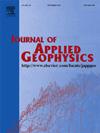利用地面穿透雷达搜寻中世纪人类遗骸:维诺萨(意大利南部巴西利卡塔省)案例研究
IF 2.1
3区 地球科学
Q2 GEOSCIENCES, MULTIDISCIPLINARY
引用次数: 0
摘要
事实证明,涉及 GPR 的受控法医地球物理研究是一种宝贵的资源,从这些研究中收集的信息已应用于法医案件工作。在较长的死后时间间隔内探测到坟墓的概率因土壤类型和与尸体一起添加到坟墓中的材料而异。在所研究的案例中,在 Venosa 的圣三一大教堂进行了详细的 GPR 勘测,该村庄位于波坦察(意大利巴西利卡塔省)以北约 40 公里处。由于需要对中世纪的人类遗骸进行基因分析,以重建诺曼贵族家族的原始血统分布,因此需要了解石棺内是否有一具尸体,如果有,其确切位置如何。在大约 0.2-0.5 米深处观察到了最强烈的振幅对比,这与埋藏尸体的深度相符。本文章由计算机程序翻译,如有差异,请以英文原文为准。
Searching medieval human remains using ground penetrating radar: A case study in Venosa (Basilicata, Southern Italy)
Controlled forensic geophysical research involving GPR has proven to be a valuable resource, and the information gathered from these studies has been applied to forensic casework. The probability of detecting a grave for a longer postmortem interval differs with the soil type and the materials added to the grave with the body. In the studied case a detailed GPR survey was conducted in the Basilica della Trinità at Venosa a village located about 40 km north from Potenza (Basilicata, Italy).
Unfortunately during the restoration works of the Basilica, there was a cement spill inside a sarcophagus containing human remains. The necessity to perform the genetic analysis of medieval human remains to reconstruct the distribution of the original line of descent of the Norman noble families aimed the need to understand whether or not there was a body inside the sarcophagus and, if so, its exact position.
The radar profiles from this survey showed the clear amplitude contrast anomalies, emanated from the corpses. The strongest amplitude contrasts are observed at around 0.2–0.5 m depth which is consistent with the depth of the buried corp.
求助全文
通过发布文献求助,成功后即可免费获取论文全文。
去求助
来源期刊

Journal of Applied Geophysics
地学-地球科学综合
CiteScore
3.60
自引率
10.00%
发文量
274
审稿时长
4 months
期刊介绍:
The Journal of Applied Geophysics with its key objective of responding to pertinent and timely needs, places particular emphasis on methodological developments and innovative applications of geophysical techniques for addressing environmental, engineering, and hydrological problems. Related topical research in exploration geophysics and in soil and rock physics is also covered by the Journal of Applied Geophysics.
 求助内容:
求助内容: 应助结果提醒方式:
应助结果提醒方式:


